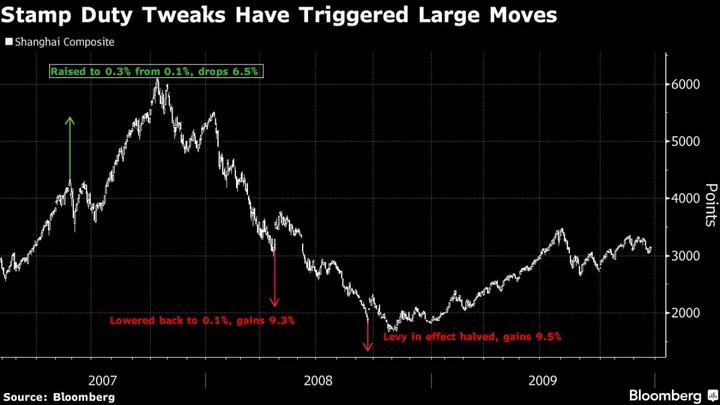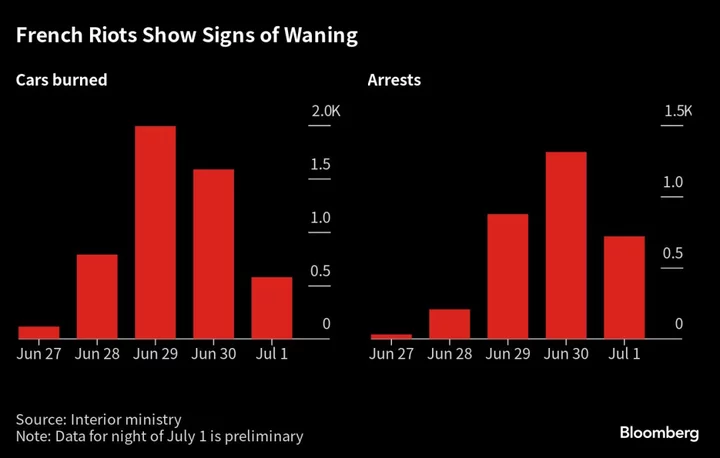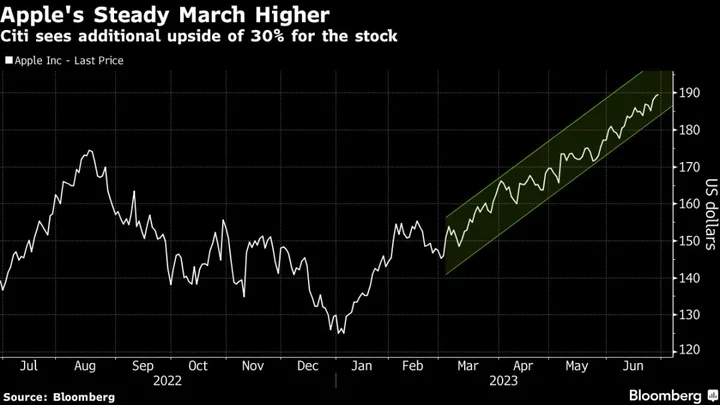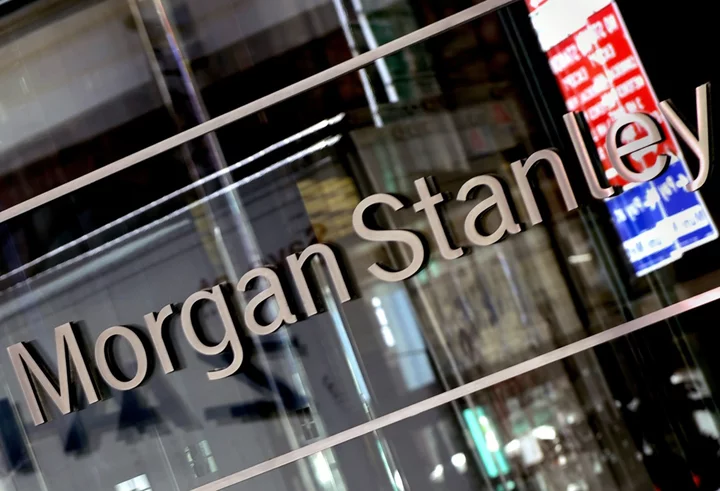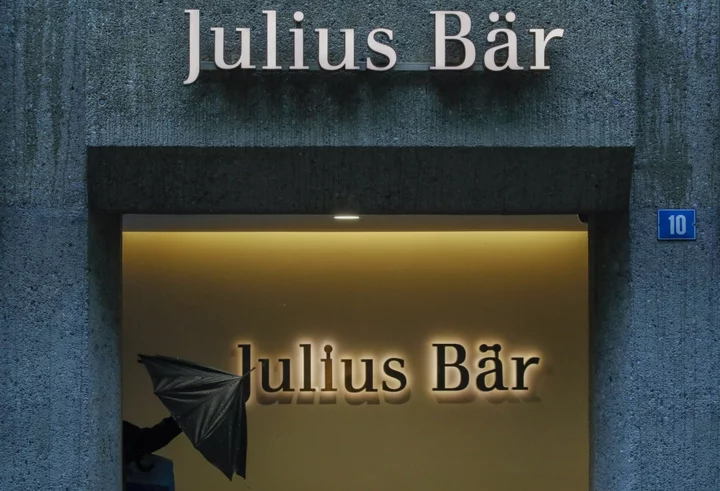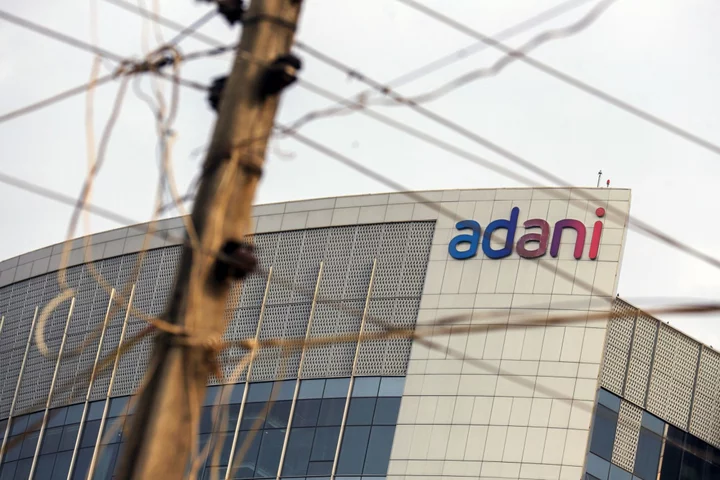Chinese stocks jumped after authorities boosted efforts to woo back investors to one of the world’s worst-performing equity markets, with measures including a cut in the stamp duty on stock trades and curbs on share sales by major stakeholders.
The CSI 300 Index of mainland stocks rallied as much as 5.5% early Monday before paring the gains to less than 2% in afternoon trading. Foreign funds accelerated their selling through the day, underscoring concerns about the broader weakness in China’s economy.
Traders had been expecting more forceful steps after recent efforts by authorities failed to arrest the market’s slide. Measures announced Sunday included a reduction in the levy charged on stock trades to 0.1% to 0.05% as of Aug. 28, the first cut since 2008. The China Securities Regulatory Commission also restricted share sales by top stakeholders at firms whose stock prices have fallen below certain levels. It cut margin ratios for leveraged trades and said it will slow the pace of IPOs citing “recent market conditions.”
The raft of changes this time are expected to bring the equivalent of 750 billion yuan ($103 billion) of new funds into the market per year, according to estimates from Huatai Securities.
“The scale, force and speed of the measures all beat expectations,” China International Capital Corp. analysts including Pu Han wrote in a note. “The increasing force of the policy tools will lift market confidence, amplifying the positive signal for the market.”
READ: Everything China Is Doing to Juice Its Flagging Economy
Traders said the latest measures may have a shot at lifting markets, though questions remain on how long the rally will last in the absence of concrete steps to revive the real economy. Key equity indexes quickly trimmed their opening gains on Monday, while foreign investors were again sellers of onshore shares on a net basis, underscoring concern that China’s economic slowdown is due to structural and entrenched problems that are hard to fix.
Global funds sold the equivalent of $1 billion of mainland shares on a net basis via trading links with Hong Kong so far in the session, according to data compiled by Bloomberg.
Stamp Duty
China last cut the stamp duty in April 2008, reducing it to 0.1% to support the market after a plunge, triggering a 9.3% rally in the Shanghai Composite in the following session and spurring a bull run into the next year. The gauge rose as much as 5.1% on Monday. In May 2007, authorities had raised the rate to 0.3% to cool a rally that was drawing more than 300,000 new investors a day.
The CSRC’s restriction on share sales by major stakeholders applies to firms whose stock prices have fallen below IPO levels or net asset levels, or those that have not given out enough dividends. Less than half of the onshore firms are trading above both book value and IPO price, according to data compiled by Bloomberg.
“New restrictions on share sales in effect keep around 250 billion yuan of funds from selling, and bring the strongest benefit to liquidity” among the measures, Huatai Securities analysts including Wang Yi wrote in a note.
Meanwhile, some property stocks jumped by daily limits as the regulator said the embattled sector is exempt from new restrictions on refinancing.
China’s stock slump has likely reached a level that policymakers can no longer turn a blind eye to. As households suffer from a shrinking wealth effect from the property crisis, invigorating capital markets has become even more crucial.
READ: China’s Industrial Profits Drop Persists as Economy Weakens
Authorities earlier this month urged pension funds, large banks and other big domestic financial institutions to increase stock investments to support the market. Regulators have also cut handling fees on stock transactions, prodded mutual fund managers to increase purchases of their own equity funds and encouraged companies to do more share buybacks. CSRC has reportedly approved 17 exchange-traded fund products and 20 mutual funds recently in a bid to support markets.
‘Bazooka’ Needed
Still, foreign investors have been fleeing in droves, and the market’s response to stimulus measures has become increasingly muted in recent weeks. On Friday, the unveiling of property stimulus measures sparked an initial flurry of buying, with China’s benchmark CSI 300 Index reversing losses. However, the gauge resumed declines after about 10 minutes and ended the day down 0.4%.
The Hang Seng China Enterprises Index advanced 1.7% as of 2:05 p.m. in Hong Kong, trimming its earlier 4.1% jump. While the gains have helped pare its losses for August to under 10%, the gauge of Chinese shares listed in Hong Kong is still one of the world’s worst performers among more than 90 equity gauges tracked by Bloomberg.
The stamp duty cut “shows the urgency for policymakers to turn around market sentiment, but last time this was followed by massive stimulus, which may not be the case this time around,” said Marvin Chen, an analyst for Bloomberg Intelligence. “The key for a sustained re-rating is still turning around economic growth momentum, and more policy support will be needed.”
China’s 10-year government bond yield gained as much as five basis points Monday — the most since late July — on bets some investors will likely switch to equities from bonds. The offshore yuan advanced as much as 0.3% before paring almost all of the gain.
The PBOC set its daily reference rate for the yuan at its strongest since mid-August, continuing a trend of more robust-than-expected fixings for the managed currency. It also injected the most amount of short-term cash to the financial system since February, a measure likely aimed at managing month-end liquidity needs.
“We expect a rally this week, maybe to a less degree than those after China lowered stamp duty in 2008,” said Neo Wang, Evercore ISI’s New York-based managing director for China Research. Wang added that a turnaround in the A-share market would not happen unless Beijing adopts more “bazooka” measures, such as the 4 trillion yuan stimulus package it rolled out in 2008.
--With assistance from Iris Ouyang, Zhu Lin and Wenjin Lv.

